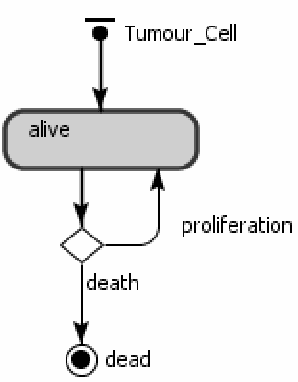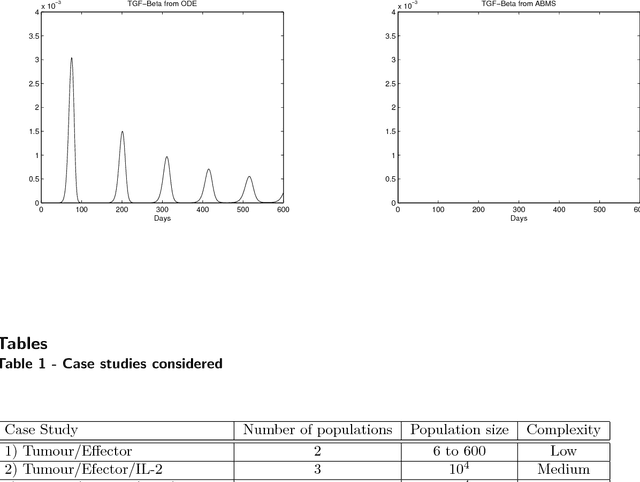Investigating Mathematical Models of Immuno-Interactions with Early-Stage Cancer under an Agent-Based Modelling Perspective
Paper and Code
May 31, 2013



Many advances in research regarding immuno-interactions with cancer were developed with the help of ordinary differential equation (ODE) models. These models, however, are not effectively capable of representing problems involving individual localisation, memory and emerging properties, which are common characteristics of cells and molecules of the immune system. Agent-based modelling and simulation is an alternative paradigm to ODE models that overcomes these limitations. In this paper we investigate the potential contribution of agent-based modelling and simulation when compared to ODE modelling and simulation. We seek answers to the following questions: Is it possible to obtain an equivalent agent-based model from the ODE formulation? Do the outcomes differ? Are there any benefits of using one method compared to the other? To answer these questions, we have considered three case studies using established mathematical models of immune interactions with early-stage cancer. These case studies were re-conceptualised under an agent-based perspective and the simulation results were then compared with those from the ODE models. Our results show that it is possible to obtain equivalent agent-based models (i.e. implementing the same mechanisms); the simulation output of both types of models however might differ depending on the attributes of the system to be modelled. In some cases, additional insight from using agent-based modelling was obtained. Overall, we can confirm that agent-based modelling is a useful addition to the tool set of immunologists, as it has extra features that allow for simulations with characteristics that are closer to the biological phenomena.
 Add to Chrome
Add to Chrome Add to Firefox
Add to Firefox Add to Edge
Add to Edge